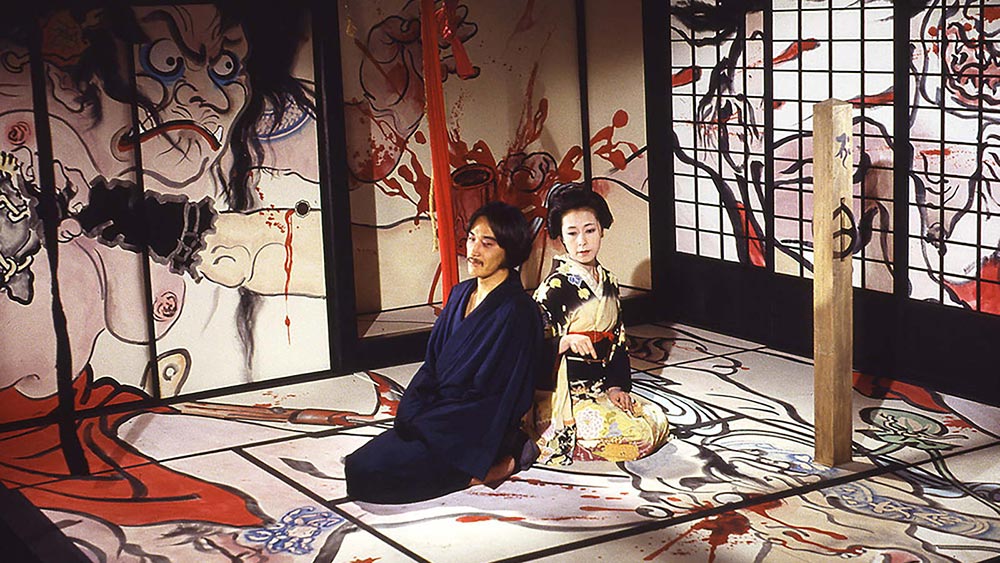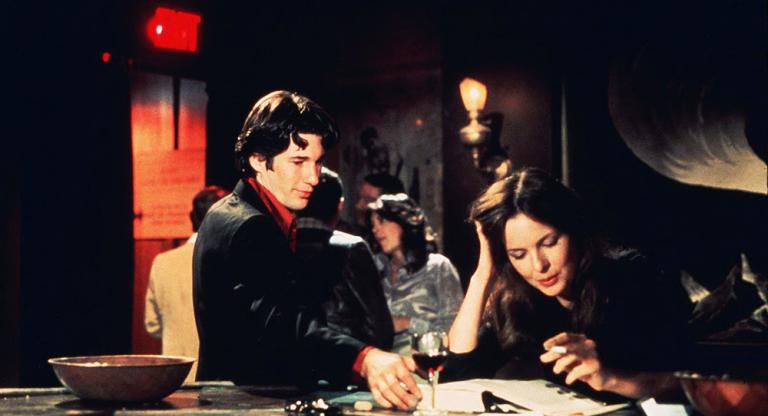Last month, Kagero-za (1981) screened as the finale of UC Berkeley Art Museum and Pacific Film Archive’s “Elegy to Seijun Suzuki” retrospective. Now the imported print makes its way to Japan Society, where it opens the all-35mm “Seijun Suzuki Centennial” mini-retrospective. The Janus-like functionality of Suzuki’s late-career period piece is only natural from an auteur whose every composition offers a suitable portal into his oeuvre. Although Kagero-za is the midpoint in his Taisho Trilogy—so named because of its films’ historical footing in Japanese Emperor Taishō’s reign from 1912 to 1926—its particular blend of smash cuts, colorful tableaux, and spontaneous scene-to-scene combustion could land it anywhere in Suzuki’s career. His anarchic vortex of sights and sounds simultaneously demonstrates the restlessness of a young maverick looking to break down all of filmmaking’s existing rules and the genius of a veteran who has learned how to bend the craft to his wild whims.
Kagero-za concerns the horniness of Shungo Matsuzaki (Yūsaka Matsuda), a sophisticated playwright caught in a love triangle between a ghost and a European woman in disguise, whose blue eyes and blonde hair only reveal themselves under moonlight. To make matters worse, both paramours have been married to his patron, Tamawaki (a hilarious Katsuo Nakamura). Though based on a ghost novel by Kyōka Izumi, Kagero-za’s preoccupations are entirely carnal. After Matsuzaki receives a letter inviting him to partake in a double suicide, meant to prove his love to the ghost, the push-and-pull between his desire and refusal catalyze the film’s transmissable anxiety. As the dramaturg spends the film maneuvering between midnight rendezvous and close encounters with death, Suzuki makes evident the all-consuming influence of humanity’s dual instinctual drives.
“I’m like a monkey dancing in a circle,” sighs Matsuzaki. The question remains: For whose enjoyment? His own? His lovers’? Suzuki’s? Ours? As Kagero-za collapses in on itself, and especially when Matsuzaki stumbles upon a troupe of child actors staging an improvised production of all the events that have transpired thus far, the meta-theatrics of the film usurp his character’s narrative centrality. Matsuzaki witnesses the stage on which the kids are performing his life go up in flames, but he does not take it as a deadly omen. Rather, he embraces it as a sign of new beginnings, relinquishing his name and adopting a series of geometric shapes as his new one. Suzuki’s films are likewise phoenixes, shedding the art’s old traditions in favor of an absurd and innominable beauty.
Kagero-za screens this evening, February 3, at Japan Society on 35mm as part of the series “Seijun Suzuki Centennial.”



